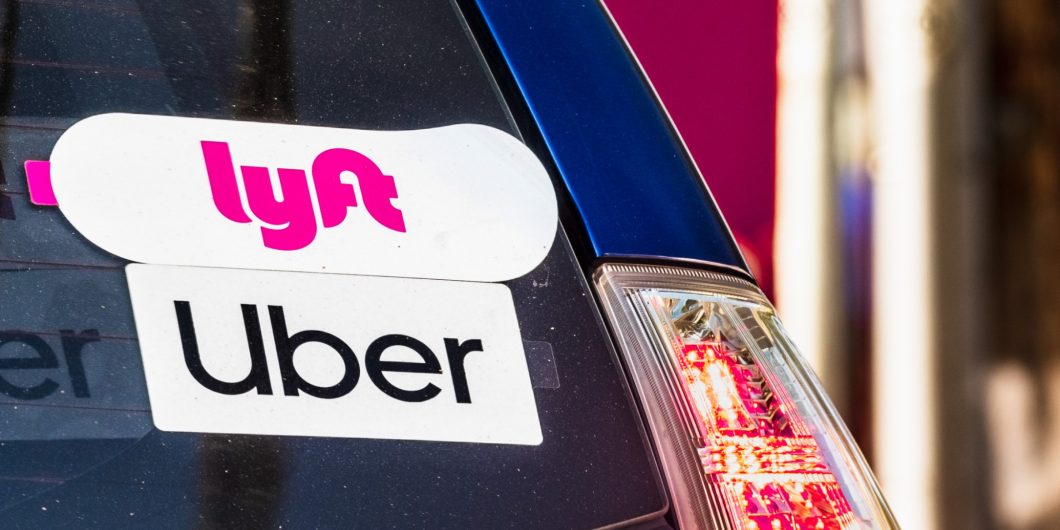Calls for stricter regulation on home rental companies like Airbnb are about protecting the hotel industry, not the consumer or communities.
Digitizing Trust
Uber has been one of the most discussed startups of our time. Some have attributed its success to technological innovation alone. Its app allows people to summon quality rides in real time without getting out on the street—an amenity that was available previously only to those with chauffeurs. Others have celebrated its equalizing effects in allowing drivers of modest means to convert the fallow asset of their car into income.
In The Trust Revolution: How the Digitization of Trust Will Revolutionize Business and Government, Todd Henderson, a law professor at the University of Chicago, and Salen Churi, a venture capitalist, understand Uber’s success through the prism of regulation. In their view, Uber and similar companies face competition not from other private actors, like traditional taxis, but from regulators like the commissions that regulate taxis. The licensing systems created by these commissions were previously necessary to give riders the confidence to get into cars with complete strangers. Uber provides the same service more efficiently. Its app allows consumers to rate their rides, and Uber cuts off those drivers who are rated poorly. Uber also monitors the routes drivers take, preventing them from charging people more by taking a roundabout way.
This private regulatory regime makes for a much better experience for riders. They can be abused by traditional taxi drivers because few people have incentives to complain to public regulatory commissions and bureaucratic structures have few incentives to respond to complaints. But maintaining a good experience is Uber’s business, and that means it is the business of Uber drivers as well if they want to stay Uber divers. As a result, riders enjoy a solicitude that they would almost never experience in taxis.
Thus, the authors see Uber’s essential innovation as one of trust—providing a more efficient mechanism of trust than furnished by government regulation. This insight is not wholly original. Airbnb—the Uber equivalent for house sharing—calls itself a “Design for Trust.” Others too have noted the sharing economy’s enhancement of trust. But Trust Revolution provides the best and most comprehensive treatment of this important idea.
Trusting and Verifying
The most interesting part of the authors’ analysis is to put the digital economy’s improvement in trust in the context of the changing mechanisms of trust throughout history. Trust mechanisms are essential for prosperity. People strike bargains only if they trust that those agreements will be fulfilled. Buying most products and services requires trust that they will work. Indeed, as the authors point out, growing trust is necessary to grow the economy: “[T]o think of it another way: trust permits exchange: exchange permits specialization: specialization increases productivity and requires even more exchange; and so on. The more you specialize, the more you need to exchange, and the more you can exchange, the more you need to specialize.”
The difficulty for most of history has been that personal trust is not sufficiently scalable to support complex markets. We do trust family and close friends, but anthropologists have shown that this trusted circle will not exceed about 140 people. It is not possible for the human mind to keep track of and monitor any more.
The authors show that the alternative to personal trust is trust sustained by government or by private corporate forms. Trust from government begins with the rule of law. People are more likely to make contracts if the government enforces contracts. The authors contend that the regulatory state is the scalable form of government trust. One argument for the regulatory state was that many matters in the modern world were too complex even for enforceable contracts to provide the necessary trust. Defective products may cause serious harm in a way that could not be wholly recompensed by contract or even torts. Private law mechanisms could not vet a driver with sufficient care to give riders the confidence to get into a cab, for instance.
Corporations also created forms of trust outside the legal system, most importantly, the authors suggest, through brands. Brands give people trust in a product because companies have invested a lot in the brand. If the brand performs below consumer expectations, that investment will erode. Or consider this analogy that I give my own students: A brand is like a vulnerable hostage. Bad performance will permit buyers to kill its value by bad-mouthing it.
Yet in many situations, it is difficult to create brands to engender sufficient trust. Taxis are a good example. And that is where the computer age has permitted a wholly new form of innovation in trust a digital platform, like Uber or Airbnb, that enlists what the authors call “the digital tribe” to create the needed bond. The digital tribe consists of everybody who uses the platform and evaluates one another in doing so. This crowd disciplines and improves everyone’s behavior. It thus makes personal trust scalable beyond the small number in an individual’s personal circle of family and friends. For instance, uber’s rating and monitoring system for drivers creates sufficient trust for people to get into a car with a stranger. With the advent of the computer age, personalized trust has finally become scalable. It is now a fearsome competitor to government and corporate mechanisms for fostering trust.
Government, brands, and the digital tribe may be overlayed on top of one another, making for a better system overall.
Thus, Henderson and Chari argue that the salient question is not whether we should favor or oppose government regulation in principle, but whether government regulation will be more efficient than this new form of digital regulation through platform. And in many areas of life, they argue persuasively it will not be. Governments are monopolies and will not innovate in the kind of regulation that will engender maximum trust. Moreover, no one votes for the mayor based on who he or she will appoint to the taxi commission. In contrast, Uber and other platforms in the sharing economy must persuade consumers to use their regulatory system rather than others, creating the usual market dynamism for refinement and progress. Voting with dollars in a wide range of circumstances is more efficient than voting by ballot.
The authors rightly point out, however, that government bureaucracies will not go gently into that good night. Moreover, these new forms of regulation also displace the incumbents who have relied on them. The price of taxi medallions—monopolies granted by the government in return for compliance with the government’s regulations—has plummeted in the cities in which ridesharing has entered. The authors in my view rightly argue that such incumbents should not be compensated by government payments or bailouts, because the prospect of such recompense will encourage government regulation instead of a more efficient private kind.
Henderson and Chari show that the rise of the digital tribe is encompassing more than just the sharing economy. Yelp and other internet rating services provide more transparency and thus more reason to trust new services from restaurants to doctors. To be sure, these information exchanges are not perfect, as the authors recognize, and they do not do away with all need for government regulation, but they often temper that need and provide constraints on businesses that government cannot and should not provide, as when Yelp evaluates the quality of services. I would classify the rise of Yelp and similar services as part of a broad modern trend of creating mechanisms to get rid of what economists call “asymmetric information” between consumers and providers. When consumers and producers have more equal information, the services and products get better faster, because consumers cannot be exploited through ignorance. The information age is an equalizing age for buyers.
Layers of Trust
The book’s historical overview on the various kinds of trust is invigorating, and its use of the Uber example to integrate their main points is well considered. Nevertheless, the book has a few flaws, the greatest of which is the penultimate chapter, which considers many areas where digital trust—the kind that is sustained by the digital tribe that interacts through platforms and the internet—may replace other forms of trust in the future. The basic problem is that the authors try to do too much in too short a space, making some of their analysis cursory.
For instance, they discuss Bitcoin as an example of a mechanism for private trust that may become a competitor to government currency. Others, including me, have previously written about Bitcoin’s relation to trust. Fiat currency is ultimately based on our trust in government structure and laws. Even a relatively successful currency like the dollar should not inspire that much trust on its own: the dollar has lost more than 90 percent of its value since the foundation of the Federal Reserve. But Bitcoin itself has trust problems. Because most people lack the ability to hold Bitcoin directly, they rely on third parties that at first were untrustworthy. Brands, in the form of companies that make Bitcoin “wallets,” and government regulation, in the form of anti-fraud laws, have proved necessary to make the system work. The authors’ analysis misses the opportunity to stress that government, brands, and the digital tribe may be overlayed on top of one another, making for a better system overall.
And while the authors rightly point out that government is not likely to be sympathetic to this competitor, they somewhat underplay the danger that the government will find ways of strangling cryptocurrencies: they are too ready to assume that prior experiences in private currency failed because they were inefficient rather than because they were squelched. At times, Henderson and Churi are so enamored of their notion that society tends toward efficient forms of trust, that they do not sufficiently explore the possibility that government has systematically thwarted the efficient path for trust in the past. This failure is not surprising, because they accept a public choice analysis of government, a view that often sees government as the visible foot preventing progress rather than the invisible hand promoting it.
There are a few other odd lapses in the book. Louis Brandeis, not Oliver Wendell Holmes wrote the famous dissent in New State Ice Co. v. Liebmann, extolling states as “laboratories of democracy.” The primary reasons for a lack of taxis around the South Side as compared to downtown Chicago are not only racism and housing density, as the authors suggest, but also higher crime rates. Taxicab drivers make their decisions about where to pick up passengers to reduce their relatively high risk of robbery and murder. But happily, Uber rates customers as well as drivers and takes identifying information in the form of a valid credit card. Uber drivers thus face far less risk picking up fares on the South Side or anywhere else, making car service more available to people of all races in more neighborhoods. Trust between drivers and riders is a two-way street.
But overall, the book is an excellent example of writing for a popular audience in an academically sophisticated way. It is brisk, entertaining, and full of well-chosen examples from our daily lives. It does not condescend but sketches some big ideas about fundamental trends that are transforming our social order and situates them in the broad sweep of history.


